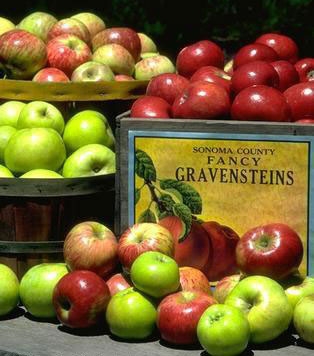
“If a Gravenstein apple could be sold for 10 times what a Red Delicious could, just as a Sonoma County grape can be sold for 10 times what a Fresno County grape is, you’d be set,” Sumner said. He said the decline of Gravenstein is part of an age-old cycle of crops going in and out of fashion. “You can say the culprit is wine grape growers, but I would say the culprit is wine drinkers,” Sumner said.
Seminar today on Asian citrus psyllid
Jan Sears, The Press-Enterprise
The Citrus Research Board and University of California Cooperative Extension will present a free seminar Friday morning (Sept. 2) on the Asian citrus psyllid, an insect that can carry a disease that poses a serious threat to Southern California's citrus industry.The free seminar will be from 9 to 11 a.m. at the Ayres Hotel in Redlands, 1015 W. Colton Ave. Topics will include treatment strategies, and an update on psyllid populations in Southern California.
UC Davis study finds federal program has significant effect on wine market
WineBusiness.com
Obscure federal program has significant effect on wine market
Central Valley Business Times
The University of California Agricultural Issues Center released an economic study which finds that use of the federal drawback program expanded rapidly over the past decade, resulting in significant movement in bulk wine supply and prices for California winegrapes. “I applaud UC Davis for their thorough analysis of the drawback program,” said Kim Ledbetter Bronson, chair of the California Association of Winegrape Growers (CAWG). “The drawback program is obscure and complicated, but the study makes clear the program has a significant impact on our industry.”
Devastating tree-killing pathogen traced to California
International Business Times
A new study by UC Berkeley and Italian researchers may have solved a decades-long mystery behind the source of a tree-killing fungus that affected six of the world's seven continents. Genetic sleuthing by an international team of researchers has fingered California as the source of the pathogen, Seiridium cardinale, which is the cause of cypress canker disease and has killed as much as 95 percent of native trees in the cypress family, including junipers and some cedars. “The fungus was likely introduced from California either in the South of France or in Central Italy 60 to 80 years ago, and that introduction resulted in a global pandemic that has devastated the region’s iconic Italian cypress trees,” Matteo Garbelotto, adjunct associate professor and UC Cooperative Extension specialist in ecosystem sciences at UC Berkeley,